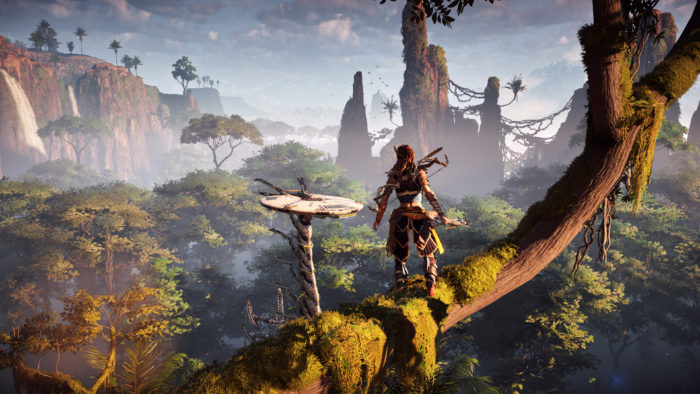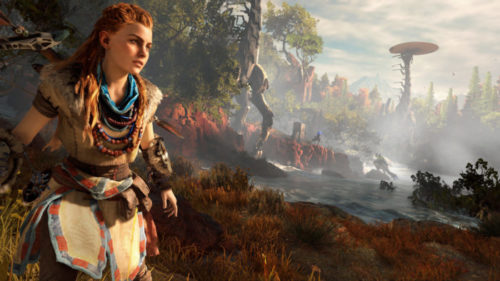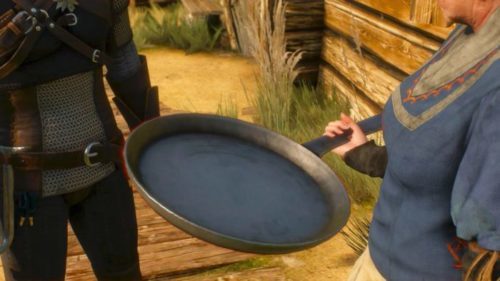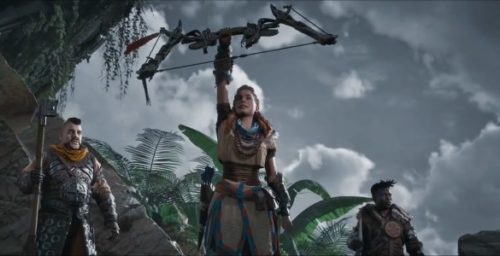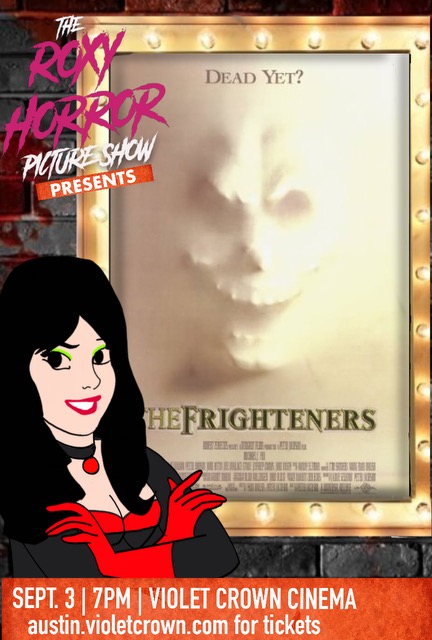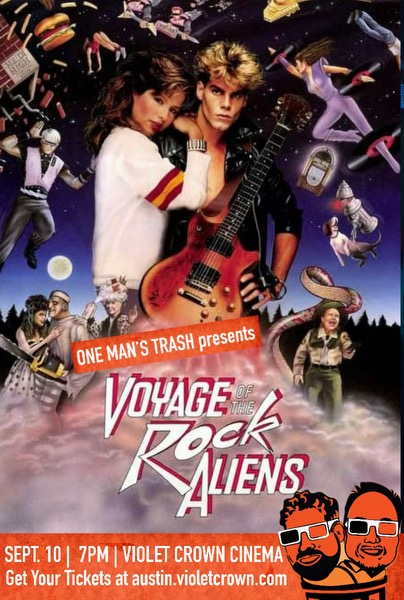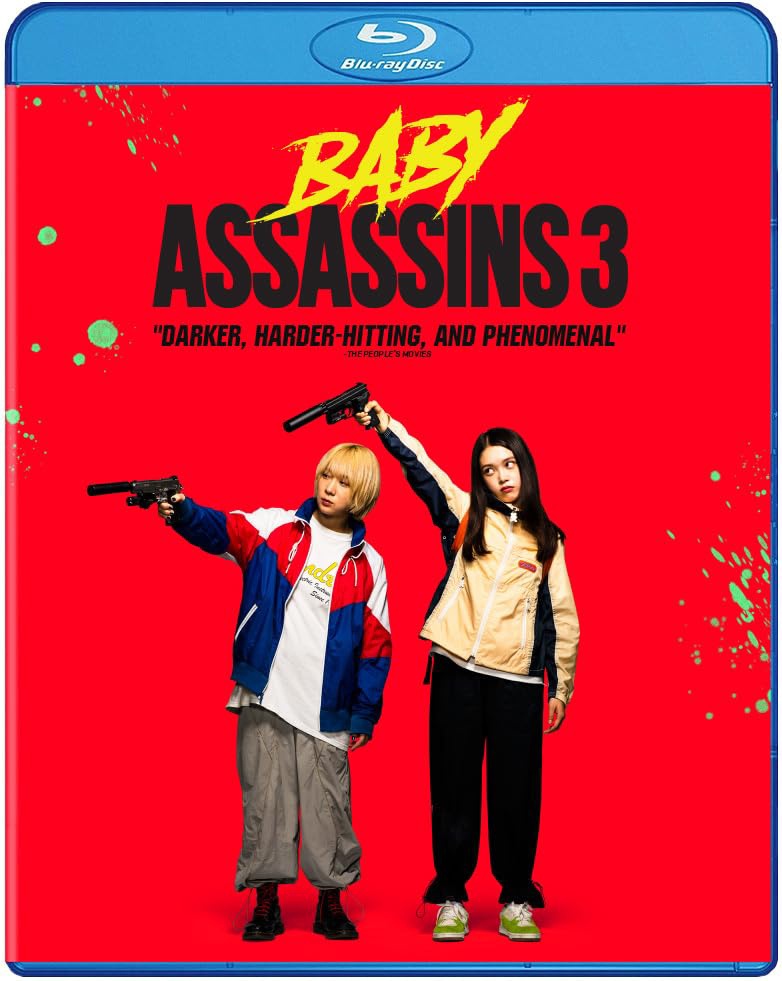This article contains spoilers for Horizon Zero Dawn.
As I battled my way through hoards of machines hell bent on destroying Meridian, I knew in my gut that my time with Horizon Zero Dawn was finally drawing to a close. When it comes to massive, open-world games like Horizon, I tend to finish every possible side quest and find every single collectible I can before crossing the final threshold: the dreaded last mission. I knew going into the final battle of Horizon that I would be completely finished with the game by the time the credits rolled. Sure enough, I made it through and the platinum trophy popped.
Then came the inevitable post-game depression I tend to get with open-world titles. After spending roughly 45 hours with Horizon, I had become completely invested in the world of the game. The last thing I wanted to do was put down the controller, especially now that I had all the best gear and weapons. It’s a common phenomenon with games like this: once they’re “over,” you’re left feeling dissatisfied that there isn’t more to do. However, Horizon Zero Dawn benefits from having aspects of linear storytelling which pay off through deep exploration of the nonlinear world. Games like Horizon, the Assassin’s Creed titles and The Witcher 3 all subscribe to an open-world aesthetic, but the way the world dictates the story can vary widely. As open-world gaming become more and more ubiquitous, what are the qualities that make a title truly stand out in the way that Horizon Zero Dawn has?
Aloy’s Journey
One of the big triumphs of Horizon Zero Dawn is that the story ultimately boils down to the hero’s journey of Aloy, the protagonist. In many open-world games the narrative is lost in the multitude of side-quests and errands the player engages with. In a game like Skyrim, the main story has more to do with a world-changing event and how your character interacts with it rather than an emotional arc. This isn’t a knock against games like Skyrim or the Fallout series at all, since those stories clearly work just as well to achieve the goals of those games. However, the way that the side-quests in Horizon interlock with Aloy’s character arc is pivotal to getting the most out of the experience.
A great example of this is the Hunting Lodge side quest. In this story, Aloy is forced to deal with the bureaucracy of an organization which scoffs at the idea of a Nora being qualified to join their ranks. The quest shows how Aloy is up against more obstacles than just giant robots: she has to prove herself to the vain, backstabbing establishment that runs the Hunter’s Lodge. On a gameplay level, the quest gives the player the opportunity to hone their skills on multiple trials, all of which earn you great loot once completed with full marks. The incentive to play this part of the game is a combination of exploration, character development and moment-to-moment gameplay.
A Bigger World?
In a game like The Witcher 3, there are many side quests which operate on a similar level, but you’ll additionally see quests like “Frying Pan, Spick and Span.” This infamous quest finds Geralt helping a lady find her missing frying pan. While the quest has essentially no inherent value from a storytelling level, it achieves something else when it comes to making the world feel real. The overwhelming amount of side quests and activities in The Witcher 3 give the player a sense of just how massive this world is. Populating the world with mini-missions like this give the player a sense of freedom in terms of just how many options are available at any given time.
This kind of side quest philosophy can also backfire, however. The world map of Watch Dogs 2 is stuffed to the gills with collectibles and mini-missions, but they’re all essentially the same activity in a different setting. The lack of variety in the side quests kills the sense of scale because while there is a plethora of activities to do, none of them feel unique. The aforementioned frying pan quest may be a trifle, but it’s a unique trifle that you won’t be repeating a hundred times. When it comes to main quests, however, Watch Dogs 2 provides enough specificity in each region to give the world a feel. The San Francisco area is for exploration, the Oakland area is for combat and the Silicon Valley area is for hacking and stealth. The issue is that because the side quests have so little effect on anything else, there’s not much incentive to doing them besides the XP or loot they offer. Not the worst motivation, but Horizon’s holistic approach runs circles around this in terms of storytelling.
Connecting the Threads
Horizon ties several of its overarching side-quests together at the end in spectacular fashion. Depending on how many side-quests you’ve completed when the final battle comes in Horizon, characters from those quests will appear to assist you in battle. The feeling of accomplishment at seeing all of those NPCs fighting with you is immensely satisfying and validates the time you’ve invested in completing those stories.
This technique isn’t new to open-world gaming, but it is underutilized in today’s dearth of titles in the genre. The two titles most famous for using this style of storytelling are the Elder Scrolls and Fallout series. These games create specific story consequences for certain actions, which in turn can have wide-ranging consequences for how events play out in each playthrough. This sandbox storytelling is a step aside from Horizon: not better or worse. Horizon represents a linear, dictated story which can be played in almost any order, while Fallout and Elder Scrolls allow you to make your own narrative. They are both equally brilliant and effective ways to harness narrative to gameplay.
Red Pill, Blue Pill
In the coming years, it is unclear which way the scale will tip on which storytelling style will take dominance (or if one even will, for that matter). There are fine arguments for both styles in open-world gaming. Having a written story which is set out for the player can have wonderful benefits including artful execution, streamlined events and a sense of cohesive narrative progression. A more player-based system can have hiccups in terms of narrative flow or character motivation. However, the benefits to each style are completely subjective to what kind of gamer is holding the controller. I prefer to be told a story from beginning to end, but I’ll be damned if some of the best gaming experiences of my life didn’t come from experimenting with just how evil and sadistic I could make my character in Fallout 3. The ecosphere of gaming obviously has room for both types of games. I would love to see the design philosophy of Horizon Zero Dawn be expanded upon by other developers, however. There are far too many open-world games these days which ultimately feel like empty worlds, vacant of human (or otherwise) life. Map-size and scope should take a backseat to making every inch of the map as relevant and organic as possible. Just look at the way The Legend of Zelda: Breath of the Wild has pushed the series by using this exact philosophy. The fact that these two games were released so close together is a good sign for the industry. It shows that even in an ecosystem where so many titles are made with unpopulated, barren digital playgrounds, there are still companies willing to push the boundaries of open-world architecture.

